
Young and Innocent, released in the US as The Girl Was Young, is a 1937 British crime thriller film directed by Alfred Hitchcock and starring Nova Pilbeam and Derrick De Marney. Based on the 1936 novel A Shilling for Candles by Josephine Tey, the film is about a young man on the run from a murder charge who enlists the help of a woman who must put herself at risk for his cause. An elaborately staged crane shot Hitchcock devised, which appears towards the end of the film, identifies the real murderer.

Lady Audley's Secret is a sensation novel by Mary Elizabeth Braddon published on 26 May 1862. It was Braddon's most successful and well-known novel. Critic John Sutherland (1989) described the work as "the most sensationally successful of all the sensation novels". The plot centres on "accidental bigamy" which was in literary fashion in the early 1860s. The plot was summarised by literary critic Elaine Showalter (1982): "Braddon's bigamous heroine deserts her child, pushes husband number one down a well, thinks about poisoning husband number two and sets fire to a hotel in which her other male acquaintances are residing". Elements of the novel mirror themes of the real-life Constance Kent case of June 1860 which gripped the nation for years. Braddon's second 'bigamy' novel, Aurora Floyd, appeared in 1863. Braddon set the story in Ingatestone Hall, Essex, inspired by a visit there. There have been three silent film adaptations, one UK television version in 2000, and three minor stage adaptations.

To Catch a Thief is a 1955 American romantic thriller film directed by Alfred Hitchcock, from a screenplay by John Michael Hayes based on the 1952 novel of the same name by David Dodge. The film stars Cary Grant as a retired cat burglar who has to save his reformed reputation by catching an impostor preying on wealthy tourists on the French Riviera.

Persuasion is the last novel completed by the English author Jane Austen. It was published on 20 December 1817, along with Northanger Abbey, six months after her death, although the title page is dated 1818.
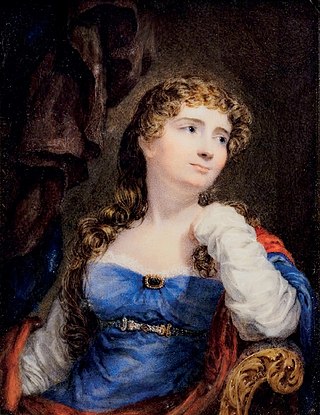
Anne Isabella Noel Byron, 11th Baroness Wentworth and Baroness Byron, nicknamed Annabella and commonly known as Lady Byron, was an educational reformer and philanthropist who established the first industrial school in England, and was an active abolitionist. She married the poet George Gordon Byron, more commonly known as Lord Byron, and separated from him after less than a year, keeping their daughter Ada Lovelace in her custody despite laws at the time giving fathers sole custody of children.

The Listerdale Mystery is a short story collection written by Agatha Christie and first published in the UK by William Collins and Sons in June 1934. The book retailed at seven shillings and sixpence (7/6). The collection did not appear in the US; however, all of the stories contained within it did appear in other collections only published there.

Nancy is a fictional character in the 1838 novel Oliver Twist by Charles Dickens and its several adaptations for theatre, television and films. She is a member of Fagin's gang and the lover, and eventual victim, of Bill Sikes.

Adele Jergens was an American actress.
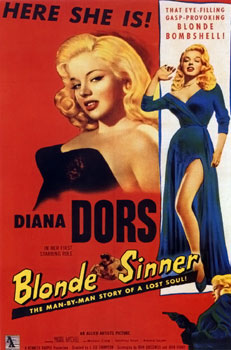
Yield to the Night is a 1956 British crime drama film directed by J. Lee Thompson and starring Diana Dors. The film is based on the 1954 novel of the same name by Joan Henry.

Jamaica Inn is a 1939 British adventure thriller film directed by Alfred Hitchcock and adapted from Daphne du Maurier's 1936 novel of the same name. It is the first of three of du Maurier's works that Hitchcock adapted. It stars Charles Laughton and Maureen O'Hara in her first major screen role. It is the last film Hitchcock made in the United Kingdom before he moved to the United States.

The Hireling is a 1973 British drama film directed by Alan Bridges, based on a 1957 novel of the same title by L. P. Hartley, which starred Robert Shaw and Sarah Miles. It tells the story of a chauffeur who falls in love with an aristocratic woman.

To Catch a Thief is a 1952 thriller novel by David Dodge. The scene is the French Riviera, and the time is 1951.
Mademoiselle Marie is the name of two fictional characters appearing in comic books published by DC Comics. She first appeared in Star Spangled War Stories #84, and was created by Robert Kanigher and Jerry Grandenetti. She was based in part on several actual members of the French resistance, most notably Simone Segouin.

I Take This Woman is a 1931 American pre-Code romance film directed by Marion Gering and starring Gary Cooper and Carole Lombard.

At the Villa Rose is a 1910 detective novel by the British writer A. E. W. Mason, the first to feature his character Inspector Hanaud. The story became Mason's most successful novel of his lifetime. It was adapted by him as a stage play in 1920, and was used as the basis for four film adaptions between 1920 and 1940.
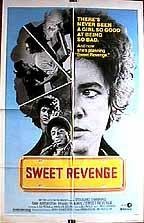
Sweet Revenge is a 1976 American crime film directed by Jerry Schatzberg. It was entered into the 1976 Cannes Film Festival. It was the second leading role for actress Stockard Channing in a film, following the previous year's The Fortune in which she co-starred opposite Jack Nicholson and Warren Beatty.
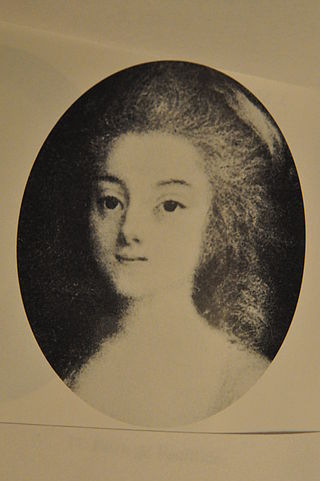
Eliza Capot, Comtesse de Feuillide was the cousin, and later sister-in-law, of novelist Jane Austen. She is believed to have been the inspiration for a number of Austen's works, such as Love and Freindship, Henry and Eliza, and Lady Susan. She may have also been the model from whom the character of Mary Crawford from the novel Mansfield Park is derived.

Maigret and Monsieur Charles is a detective novel by the Belgian writer Georges Simenon, and is the last novel featuring his long-running character Jules Maigret.
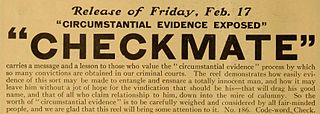
Checkmate is a 1911 American silent short drama film produced by the Thanhouser Company. Focusing on the subject of convictions by circumstantial evidence, the plot has a French baron and an American businessman vie for the affections of an heiress. She chooses the American and the French baron conspires with the heiress's aunt to take revenge. The American falls into their trap and is accused of stabbing the baron by the conspirators. The circumstantial evidence was enough to convict him and he is sent to prison. Through the aid of a homeless doppelgänger who looks like the fiancé, he is substituted in prison and the original forces a confession from the aunt. For his plot, the baron is convicted of perjury and sent to prison. Released on February 17, 1911, the film was a critical failure for its improbable plot and its prison substitution scene. The film is presumed lost.

Jacqueline Holt is a character in Wentworth and serves as the main antagonist in the first season. Jacs was notable for being the first known top dog in Wentworth and for her rivalries with Franky Doyle and Bea Smith. Jacs was portrayed by Kris McQuade.



















